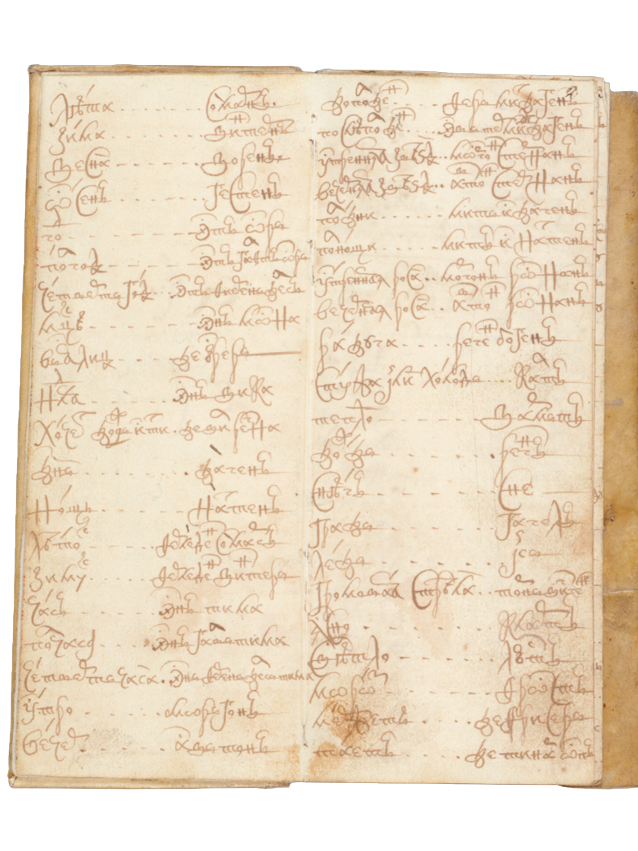Book for records of merchants Koshkiny with Russian-Swedish phrase-book

The notebook contains records of several generations of merchants of Great Novgorod Koshkiny and these records retained unique information about the organization of trade in the XVII – XVIII centuries. The ancestor of the trade dynasty, Stepan Averkiev Koshkin, was engaged in the production of malt and led trading business outside his hometown, occasionally traveling abroad to Sweden. In the middle of the XVII century the family business was concentrated in hands of his son Timofey Koshkin, by 1663 he was already listed among the forefront of the trade nobility of Novgorod.
By 1690 Timofey Koshkin delegated trade trips to his sons, while he continued to manage family business. All proceeds were sent to father in Novgorod and according to father’s letters monetary expenditures were made. The Koshkin brothers continuously traveled with goods to Stockholm, where they were renting a shop in the Russian Gostiny Dvor (Merchants yard), then to Moscow and back to Novgorod.
Merchants exported clean hemp, raw and flax, which formed the basis of export, as well as baked fat, potash, canvas (which at their own expense were painted), linen, thick linen, fur, leather and leather products: Russian leather, lashes and mittens, to Sweden. The Baltic Sea was crossed on their own ships, which often carried goods also from other Novgorod merchants. Only metals were exported from Sweden: two types of iron (“rod” and “plank”), iron products, steel, “red copper in kettles and pipes”, “copper millberry in kettles and wires”, latten, “zaprudnaya copper” (an alloy of copper and tin). Goods bought in Stockholm were almost completely shipped to Moscow.
In addition to trading accounting, Nikifor and Nikita Timofeevichi kept in their notebook a Russian-Swedish phrase-book. In the left column Russian words and expressions are placed, in the right - their translation into Swedish in transcription in Cyrillic letters. It contains common words related to everyday life, weather, trade, and everyday and etiquettical expressions, for example, wishes for the New Year.
